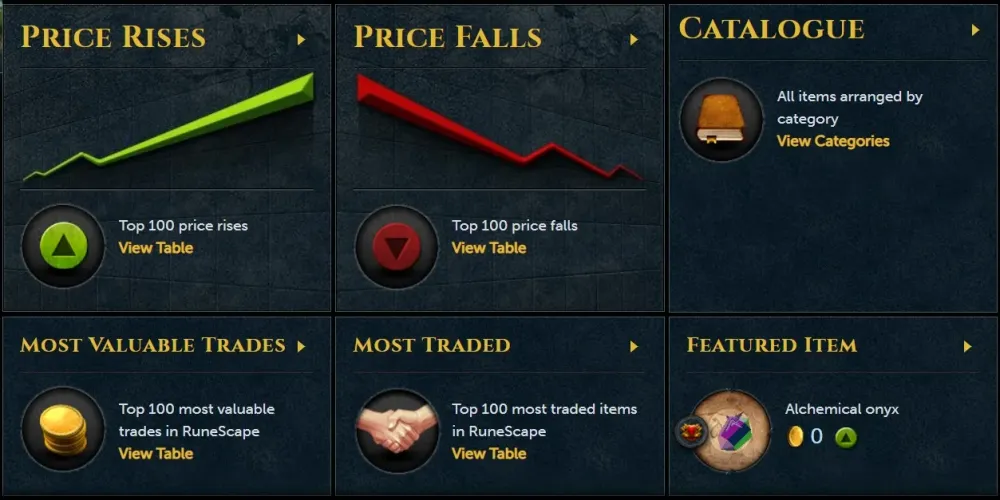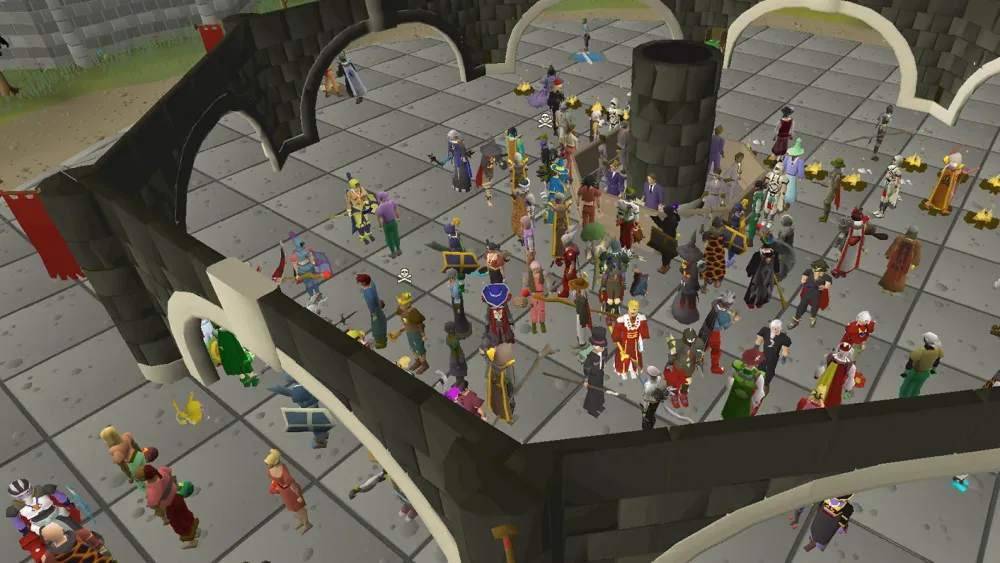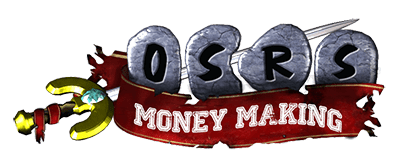Your cart is empty
OSRS GE Live Tracker: Your Ultimate Guide to Mastering the Grand Exchange

Old School RuneScape (OSRS) is a game that thrives on its player-driven economy, and at the heart of it lies the Grand Exchange (GE). Whether you’re a seasoned flipper or a casual player looking to make some extra gold, understanding the market is key. That’s where an OSRS GE live tracker comes in—a powerful tool that provides real-time insights into item prices, trends, and trading opportunities. In this comprehensive guide, we’ll explore what an OSRS GE live tracker is, how it works, and how you can use it to dominate the Grand Exchange. Let’s dive in!
An OSRS GE live tracker is a tool designed to monitor and display real-time price data for items traded on the Grand Exchange. Unlike static price guides, these trackers update frequently—sometimes every few minutes—offering players an up-to-the-minute view of the market. This makes them invaluable for anyone looking to buy low, sell high, or simply stay informed about the game’s economy.
Why Use a Live Tracker?
The Grand Exchange is a dynamic marketplace influenced by player activity, game updates, and seasonal events. Prices can fluctuate rapidly, and without real-time data, you’re essentially trading blind. A live tracker gives you the edge by showing current buy/sell prices, trade volumes, and historical trends, helping you make informed decisions.
Popular OSRS GE Live Tracker Tools
Several tools offer live tracking for the OSRS GE, each with unique features:
- GE Tracker: Known for its advanced flipping tools, real-time price alerts, and detailed graphs.
- OSRS Wiki Real-Time Prices: Powered by RuneLite, this free tool integrates with the wiki for accurate, community-sourced data.
- OSRS Exchange: Offers fast updates and a focus on flipping profitability.
How Does an OSRS GE Live Tracker Work?

Live trackers pull data directly from the game or community sources to provide a snapshot of the Grand Exchange. But how exactly do they function, and what makes them so reliable? Let’s break it down.
Data Sources
Most live trackers rely on APIs or plugins like RuneLite, which millions of players use. RuneLite captures trade data as players buy and sell items, feeding it into systems like the OSRS Wiki’s real-time price database. Other tools, like GE Tracker, combine this with their own algorithms to refine the data further.
Real-Time Updates
Unlike the official RuneScape GE website, which updates prices daily or less frequently, live trackers refresh every few minutes. This speed is crucial for spotting short-term opportunities, such as price spikes after a game update or a sudden surge in demand.
Key Features of a Live Tracker
Here’s what you can expect from a top-tier OSRS GE live tracker:
- Price History Graphs: Visualize trends over hours, days, or months.
- Margin Calculations: See potential profit margins for flipping items.
- Trade Volume: Understand how often an item is traded, indicating liquidity.
- Alerts: Get notified when prices hit your target buy or sell points.
Benefits of Using an OSRS GE Live Tracker
Using a live tracker isn’t just about keeping up with prices—it’s about gaining a competitive advantage. Here’s why it’s a game-changer for OSRS players.
Maximize Profits with Flipping
Flipping—buying low and selling high—is one of the most popular money-making methods in OSRS. A live tracker helps you identify items with high margins and stable trade volumes. For example, you might spot that Dragon Bones are selling for 2,500 GP but buying for 2,300 GP, netting you a tidy profit per trade.
Stay Ahead of Market Trends
Game updates, such as new bosses or skill changes, can drastically affect item prices. A live tracker lets you react instantly. When the Tombs of Amascut raid dropped, items like Masori Armor saw massive price swings—players with live trackers capitalized on these shifts while others missed out.
Save Time and Effort
Manually checking prices in-game or on static websites is tedious. A live tracker automates the process, giving you all the data you need in one place. This efficiency is especially valuable for players juggling multiple GE slots.
How to Use an OSRS GE Live Tracker Effectively
Having a live tracker is one thing—using it well is another. Here’s a step-by-step guide to mastering the Grand Exchange with this tool.
Step 1: Choose Your Tool
Start by picking a tracker that suits your needs. If you’re a beginner, the free OSRS Wiki real-time prices are a great entry point. For advanced users, GE Tracker’s premium features might be worth the investment.
Step 2: Identify Profitable Items
Use the tracker’s filters to find items with high margins or trade volumes. Focus on:
- High-Volume Items: Like runes or ores, which move quickly.
- Niche Items: Rare drops or PvP gear with bigger margins but slower trades.
Step 3: Analyze Trends
Check the price history to see if an item’s value is rising or falling. For instance, if Runite Ore has been climbing steadily due to a mining update, it might be a good long-term investment.
Step 4: Set Alerts and Act
Many trackers let you set price alerts. If you’re waiting for Abyssal Whips to drop below 2M GP, set an alert and jump in when the time’s right.
Sample Flipping Strategy
Here’s a quick example using a live tracker:
| Item | Buy Price | Sell Price | Profit per Item | Trade Volume |
|---|---|---|---|---|
| Cannonballs | 180 GP | 200 GP | 20 GP | 10,000/day |
| Dragon Bones | 2,300 GP | 2,500 GP | 200 GP | 1,000/day |
With this data, you could flip 1,000 Cannonballs for 20,000 GP profit or 100 Dragon Bones for the same amount, depending on your capital and patience.
Top Tips for Success with an OSRS GE Live Tracker
To truly dominate the Grand Exchange, you’ll need more than just a tool—you’ll need strategy. Here are some expert tips to get you started.
Start Small
If you’re new to flipping, begin with low-risk, high-volume items like Feathers or Coal. These have small margins but trade frequently, minimizing your risk while you learn the ropes.
Monitor Game Updates
Jagex’s updates can shake up the market. When a new quest or boss is announced, use your tracker to watch related items—like Prayer Potions or Shark—and buy before the hype drives prices up.
Diversify Your Investments
Don’t put all your gold into one item. Spread it across multiple trades to reduce risk. For example, flip some Yew Logs, invest in Bonds, and hold onto a few Rare Drops for long-term gains.
Be Patient
The GE rewards those who wait. If an item’s price is dropping, hold off on selling until it rebounds. Your live tracker’s historical data will help you time these moves perfectly.
Avoid Overhyped Items
Items like Partyhats or discontinued rares are tempting, but their prices are volatile and often manipulated. Stick to stable, everyday items unless you’re an experienced trader.
By now, you should see the power of an OSRS GE live tracker. It’s not just a tool—it’s your ticket to mastering the Grand Exchange and building your in-game wealth. Whether you’re flipping Cannonballs for quick cash or investing in Dragon Bones for bigger payouts, real-time data is your secret weapon. Start exploring tools like GE Tracker or the OSRS Wiki today, and watch your gold pile grow. Happy trading!
